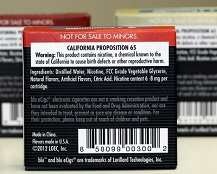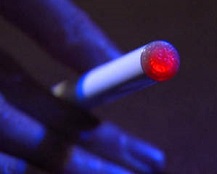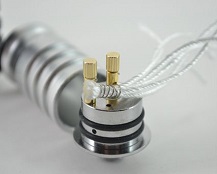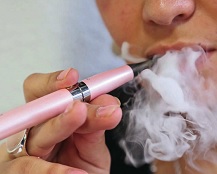E-liquid typically consists of four main ingredients: propylene glycol, vegetable glycerin, nicotine and flavoring. What isn't exactly clear is what constituents make up the vapor e-cigs produce.
Rechargeable batteries based on lithium-ion technology are what power many of our electronic devices, not just e-cigarettes. And because of the nature of their chemistry, lithium batteries all possess inherent risks.
In the event that a bystander would pass through the vapor, since it doesn't contain the irritating toxins of tobacco smoke, it would likely be barely detectable beyond the faint scent of the flavor and only for a fleeting moment.
One of the most commonly heard criticisms of e-cigs is that they just allow nicotine addiction to continue in some other form. Yes, some vapers do continue to consume nicotine, and nicotine is a highly addictive drug. There is no denying that; it’s why people smoke cigarettes in the first place!
Only about 3-7% of smokers who try going cold turkey actually end up quitting smoking. E-cigarettes have much higher success rates.
Are we inhaling carcinogens and still exposing ourselves to similar risks to smoking a cigarette? Well, no. In fact, looking into the issue in more detail could even give you reason to accuse some anti-smoking advocates of outright propaganda.
Researchers in Greece seem to have a thing for testing airway resistance. Two Greek studies published last year found that use of electronic cigarettes increased airway resistance in smokers without COPD or asthma.
One of the most frequently cited “issues” with e-cigs is that they aren't currently FDA-approved and therefore must be either unsafe or ineffective for their chosen purpose.
One of the arguments often put forwards by current smokers is that e-cigs are actually ineffective for their intended purpose. It’s often said with an underlying smugness, an inherent assumption that tobacco cigs are “the real thing” and e-cigs are just a childish imitation which could never replace their analogue habit.
Let’s get it out there. Some e-cigs look like robot penises. This fact leads many smokers to declare flatly that e-cigs are too bulky, too much to carry around and too awkward to ever serve as a replacement for the carcinogen-laden alternative.
If you find yourself in a debate as to whether e-cigs are just a passing fad, the first thing you need to do is empathize.
This is another understandable concern from the smoker’s point of view, since many APVs look like you need a freaking degree in engineering to operate them at first glance.
This is sadly fatalistic argument from smokers, but thankfully for e-cig advocates, it’s once which is actually well-addressed by research.
Due to many public restrictions, some vapers have turned to Stealth Vaping as a way to vape in public places without being spotted.
Many people who argue against e-cigs are incensed by the technology because vapers are still addicted to nicotine, but these arguments inherently side-step the entire purpose of the technology: it’s a harm reduction device.
Here’s an introduction to solar-powered e-cigs and chargers – many of which can charge your phone, iPod and other devices too!
A new study, funded by CASAA, has looked at the existing data on the contents of e-liquids and the vapor from e-cigs, and – unsurprisingly – found no evidence of risk to vapers, even under “worst case” scenarios.
A recent French study concludes that e-cigs are potentially carcinogenic. To find out what they actually determined from the test, it’s very, very important to look what they did to come to their conclusion. The answer would literally melt your face off.
Scam companies and bogus free trial offers are unfortunately common in the world of e-cigs, and if you want to avoid falling prey to one of them there are several important tips you should keep in mind.
The main improvements are likely to take the form of improved manufacturing processes – to keep things like the heavy metal content of vapor to an absolute minimum – but in some areas, e-cigs are still in need of some high-tech innovation. Here are the top five technologies we think e-cigs are missing.




















